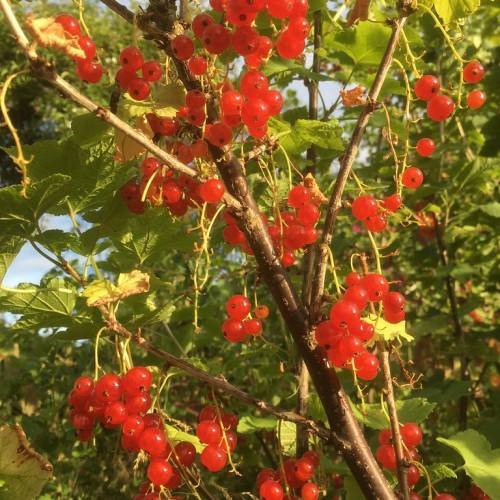
red currant
Ribes rubrum 'Rovada'
Cycle:
Perennial
Watering:
Average
Hardiness Zone:
3 - 7
Flowers:
Flowers
Sun:
Full sun,part shade
Fruits:
Fruits Ready In
Edible:
Yes
Leaf:
Yes
Growth Rate:
Low
Maintenance:
Moderate
Care Level:
Medium
watering
Red currant (Ribes rubrum 'Rovada') should be watered frequently and deeply. During the summer months, it should receive 1 to 2 inches of water weekly, either from rainfall or irrigation. Water deeply, ensuring that the soil is moist down to at least 6 inches deep. During the winter, water the plant only every 2 to 3 weeks, as it does not need as much water during the cold months. Monitor the soil on a regular basis to ensure that it does not dry out, but avoid overwatering as this can lead to root rot and stem diseases.
sunlight
Red currant (Ribes rubrum 'Rovada') is a deciduous shrub that prefers full sun for optimal growth and berry production. It requires 6 to 8 hours of sunlight per day during its growing season. It should be in a sunny location that receives direct sunlight in the morning and partial shade during the hot afternoon periods. The best exposure for growing this plant is an area that has morning sun and afternoon shade. For plants in regions with prolonged periods of intense sunlight, some shade protection from other taller shrubs and trees is beneficial. Additionally, it should be planted in an area that is sheltered from strong winds that may damage the delicate fruit clusters and calyxes.
pruning
Red currant (Ribes rubrum 'Rovada') should be pruned during the early winter months, before new growth begins. This plant species typically requires light pruning, as it is an upright-branching and naturally compact plant. Pruning should include removing dead, diseased, and broken branches. Yearly pruning can be done to remove thin, weak stems and to maintain an open center structure to the plant. Additionally, it is beneficial to remove any crossing or inwardly facing branches to allow light to reach all parts of the shrub. Any excess growth should be selectively pruned to the desired shape and size.
